If you’ve been driving a car for any length of time, you know that eventually, the power steering fluid will start to get dirty. This can cause all sorts of problems with your car, including decreased performance and even component failure.
In this guide, I will show you how to clean the power steering reservoir so that your car runs like new again!
Key Takeaway
- The purpose of a power steering reservoir is to store the hydraulic fluid used by the system, providing a place for the pump to draw fluid from and for fluid to return to, which assists in steering the vehicle with minimal effort.
- To clean the power steering reservoir, you need to open the hood of the vehicle, locate the reservoir, disconnect the hoses, remove the reservoir, and then use a cleaning solution like brake cleaner spray or paint thinner, along with a rag or brush, to scrub away any dirt and debris before reattaching it to your vehicle.
What is The Purpose of a Power Steering Reservoir?
A power steering reservoir is used to store power steering fluid. This fluid helps the car’s power steering system function properly by providing lubrication and cooling. The reservoir also collects any debris or contaminants that may be present in the system.
It is important to keep the power steering reservoir clean and full of fluid so that the car’s power steering system can operate at its best. If the reservoir becomes low on fluid or dirty, it can cause problems with the car’s overall performance.
For this reason, it is important to check the level of fluid in the reservoir and replace it as needed. Doing so will help ensure that your car’s power steering system operates smoothly and efficiently.
How To Clean Power Steering Reservoir
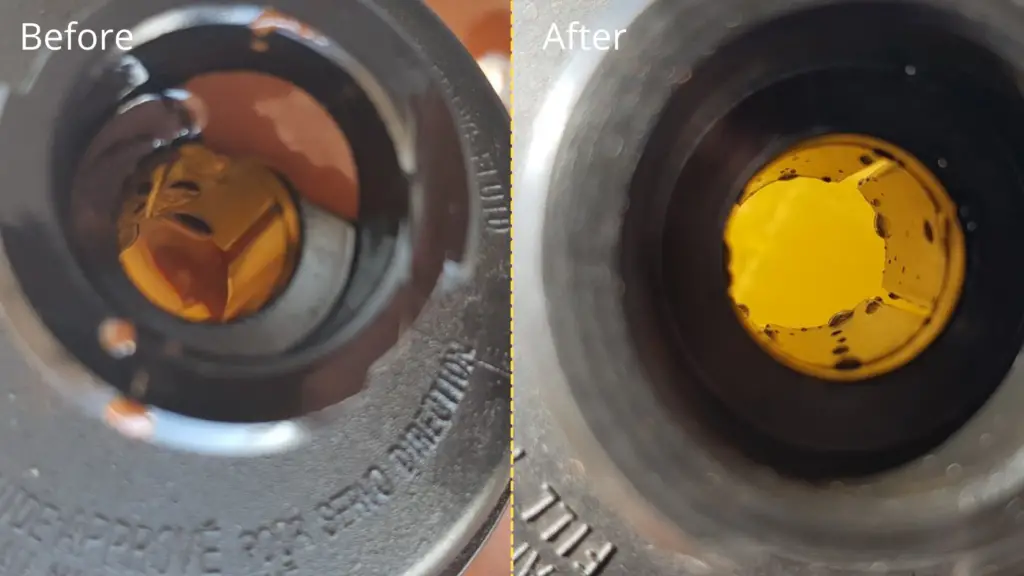
- Open the hood and locate the power steering reservoir.
- Using needle-nose pliers, remove the two hoses that feed the reservoir with fluid. Expect that the fluid will start draining. So, get a catch pan in place.
- Remove the two bolts that are holding the power steering reservoir in place.
- Spray some cleaner inside the power steering reservoir to clean it.
- You can also soak it in soap and water overnight.
- Reinstall the reservoir.
1. Required tools for the job
- Needle-nose pliers
- 10 and 12 mm wrench
- Airflow sensor cleaner
- Power steering fluid
- Safety goggles
- Gloves
2. Locate and gain access to the power steering reservoir

The power steering reservoir is located under the hood. On most vehicles, the reservoir is on the passenger side, right next to the engine. It is written ”Power steering fluid” on top of the cap. In order to work on removing the power steering reservoir, you will have to gain access.
Many factory service manuals suggest removing the airbox when you are working on the power steering reservoir and pump. Usually, to remove the airbox, you will have to remove a couple of bolts and a few fasteners. But by doing so, you will have clear access to the power steering reservoir.
On vehicles where the airbox is not in the way, you can go ahead and skip this part.
3. Remove the power steering reservoir hoses
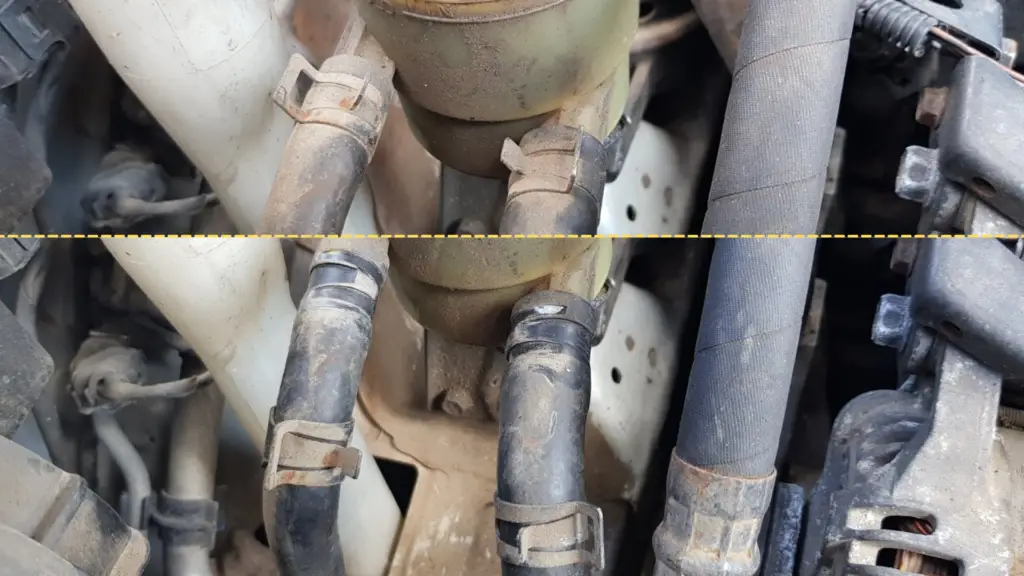
Things to remove: Clamps
To remove the clamps that hold the hoses, you will need needle-nose pliers or regular pliers. Squeeze the clamps and move them away from their current position.
They will probably be stuck in place so just wiggle them a little bit. After you remove the hoses, make sure to place them in an upright position because they will have some power steering fluids left in them.
4. Place a drain pan
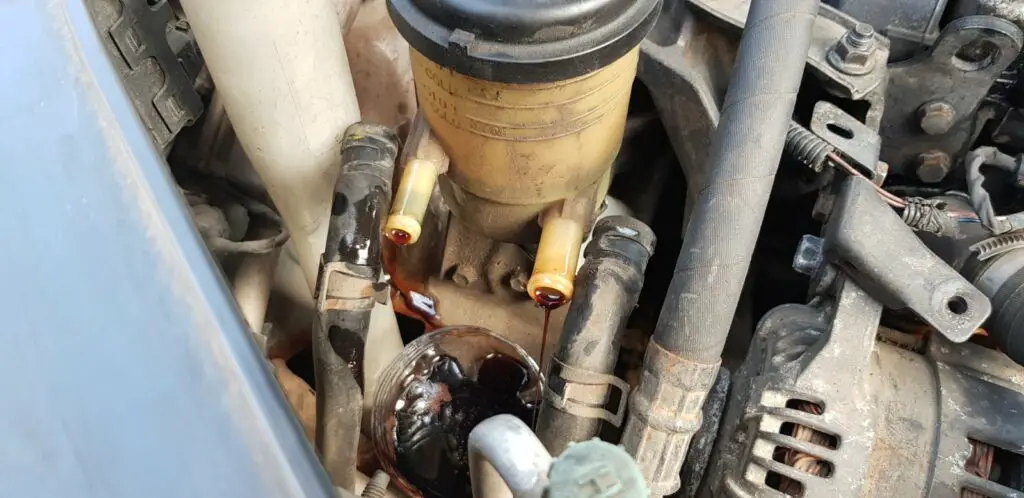
Remove the clamps one at a time and position the hoses in an upward position so you don’t have a lot of fluid leaking. Place the drain pan below the power steering reservoir and allow the fluid from the reservoir itself to drain in the catch pan.
5. Remove the bolts that hold the reservoir in place
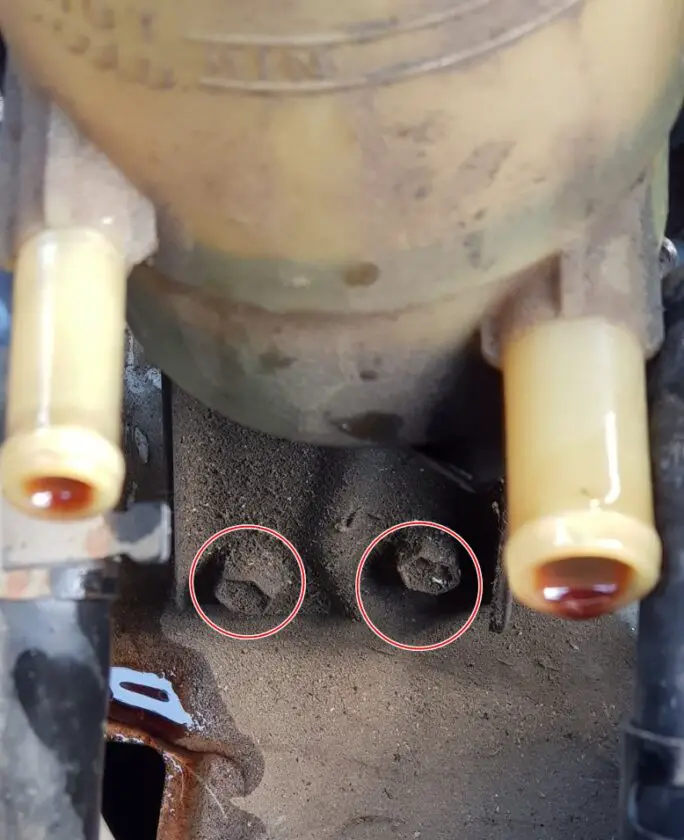
Next, locate the bolts that hold the power steering reservoir in place and remove them. Usually, there are three bolts, one on the front and two on the back of the reservoir that holds it in place.
The size of the bolts is either 10 mm or 12 mm. Store the bolts separately and remember which bolt goes where because they are not the same size.
6. Inspect the power steering reservoir
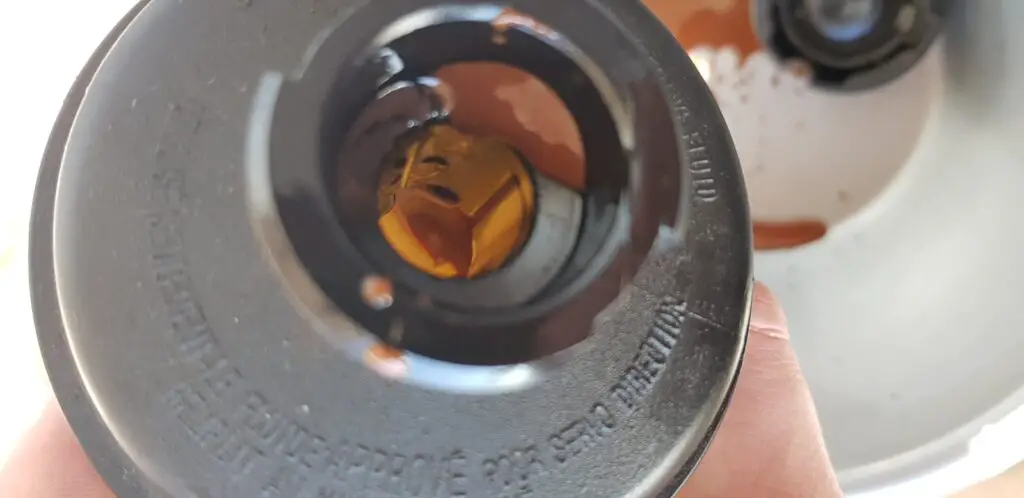
Once you remove the power steering reservoir, it is time to visually inspect it. On the bottom of the reservoir, there is an O-ring. This o-ring seats with the power steering pump and creates a leak-proof seal. Make sure that this o-ring is intact or otherwise you will have fluid leaks.
Next, use a flashlight to see how dirty the inside of the power steering reservoir is. There is a filter on the bottom that holds any debris and dirt and prevents it from circulating in the system.
This filter is the dirtiest part of the power steering reservoir. Flash the light from the bottom port of the reservoir and try to see how much light will be visible from the top opening.
If your power steering reservoir doesn’t have an o-ring or a filter on the bottom, do not worry. Some vehicles only have two hoses that are used for the fluid to circulate through them.
7. Spray the airflow sensor cleaner
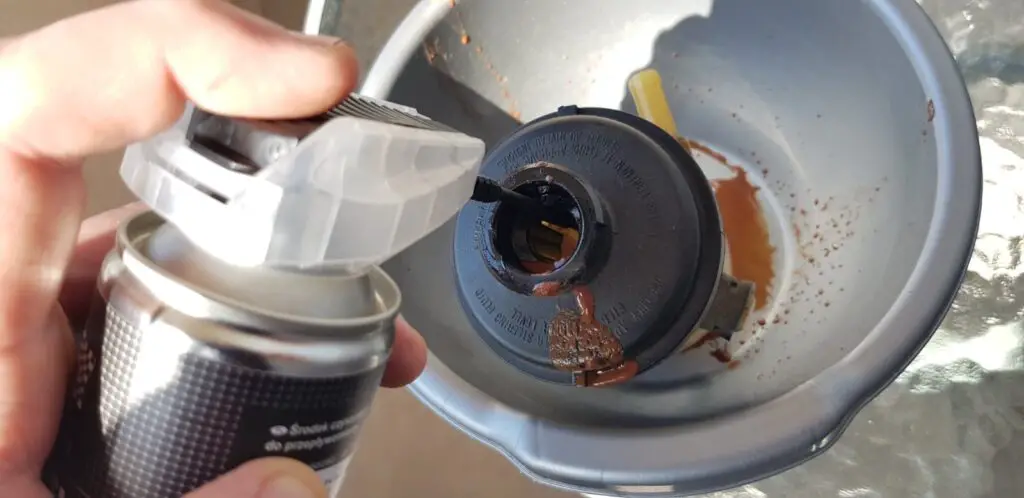
Get a catch pan because there will be a lot of debris coming out. Then, with the airflow sensor cleaner (do not use brake cleaner it will only damage the reservoir) spray directly into the filter screening from the bottom opening. Direct the cleaner at as many angles as you can.
Note that this debris is probably stubborn and you might not see a lot of results with the first can. I have done this so many times before. To be honest, I am happy if I do this job with only two cans.
Next, try spraying from the top opening to loosen some debris and then go back from the bottom opening. You have to direct the hose at all different angles and basically try to force the black gunk out of the filter and out through the top.
You can also put a little angle into the spray hose (just bend it with your hands) so you can get to all areas of the screen. There is just a little port to work with and you have to be creative. Overall, it is a slow process, but you will get it clean says UTI EDU.
8. Let the power steering reservoir to dry
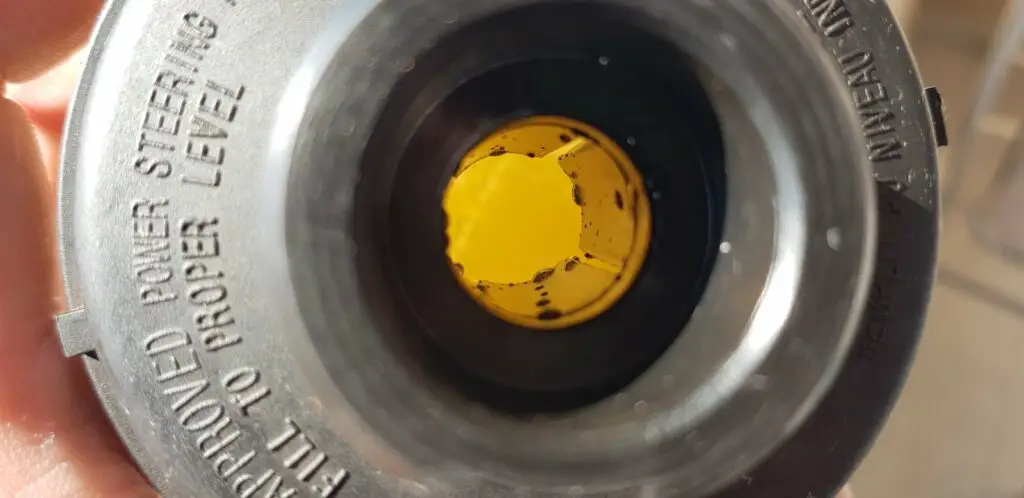
After you are done cleaning the power steering reservoir, you need to let it dry. The airflow sensor cleaner takes about two to three hours to completely dry.
However, if you are impatient and in a rush, you can use an air compressor to dry it faster. However, do not use more than 30 PSI as you might damage the filter.
9. Reinstall the power steering reservoir
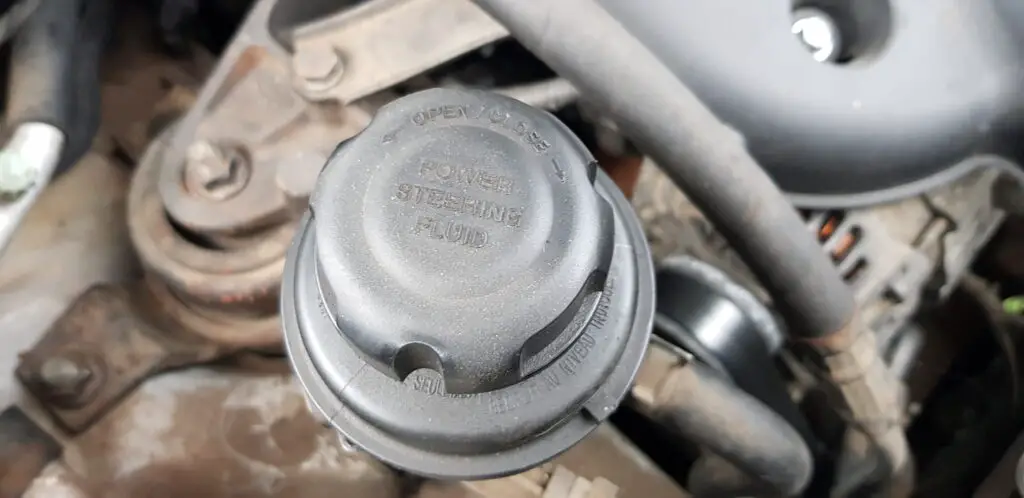
Once the power steering reservoir is dried, it is time to reinstall it. Before actually putting the reservoir in place, make sure to lubricate the o-ring with some steering fluid.
Then, slide the reservoir in place on the pump and reinstall the three bolts. Make sure not to tighten the bolts too much. Next, reconnect the hoses back in place and secure them with the constant tension clamps.
If you had to remove the airbox in order to gain more access to work on the power steering reservoir, reinstall it. As I said before, not all vehicles require this step. Just see how much room you have to work in and be the judge if you have to remove anything else to gain more access to the reservoir.
10. Top off the reservoir
Add some power steering fluid into the reservoir. Make sure that you are only filling it to the cold level. Go easy as the reservoir is pretty small and will be filled up pretty fast.
Close the reservoir cap and start the vehicle. Start turning the steering wheel left and right to force out air from the system into the reservoir and then check the level of the fluid. Add more fluid if needed.
Can a Power Steering Reservoir Get Clogged?
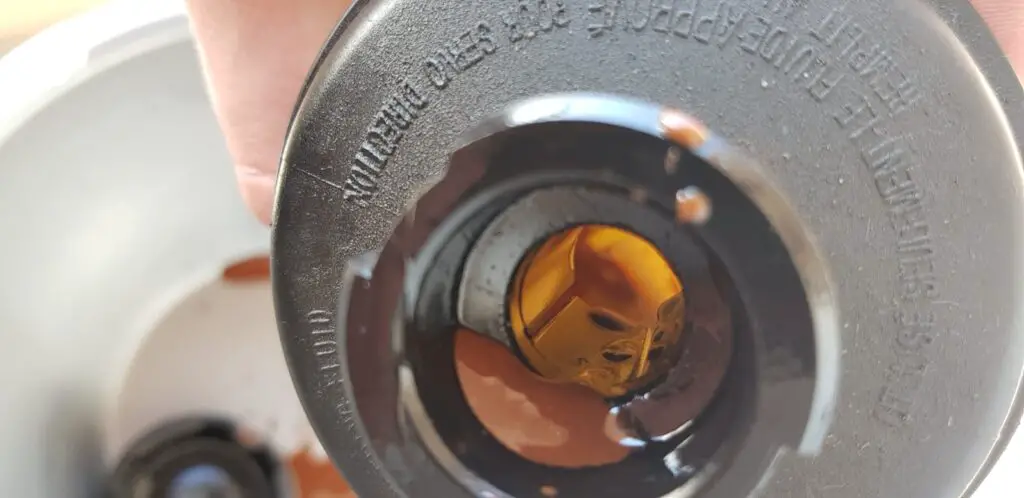
Yes, a power steering reservoir can get clogged. This is often caused by dirt and debris that accumulates over time. If the reservoir becomes clogged, it will not be able to properly function, which can result in loss of power steering. It is important to clean the reservoir regularly to prevent this from happening.
The fluid level should be checked on a regular basis and the fluid replaced as needed. Dirty power steering fluid can log the power steering reservoir.
If you are experiencing any problems with your power steering, such as a loss of power or noise, inspect your power steering reservoir. There may be something wrong with the reservoir or the power steering system that requires attention.
How Do I Know If My Power Steering Reservoir is Bad?
A bad power steering reservoir can cause a number of problems with your car. It can cause the steering to feel heavy, make it difficult to turn the wheel, and cause strange noises. If you notice any of these symptoms, you should take your car to a mechanic to have it checked out. Ignoring the problem could lead to more serious issues down the road.
If you suspect that your power steering reservoir is going bad, there are a few things you can do to check it. First, check the fluid level. If it’s low, that could be the problem.
Second, look for leaks around the reservoir or hoses leading to it. Third, check for signs of corrosion or damage. If you notice any of these problems, it’s best to take your car in for repair. Otherwise, the problems could get worse and cause more damage.
Does The Power Steering Reservoir Have a Filter?
Yes, the power steering reservoir has a filter inside the reservoir designed to prevent debris from contaminating the steering system. In order for the power steering fluid to flow freely, the filter has to be clean and free of debris. The only drawback to this filter is that it doesn’t have bypass capability. So, once it becomes clogged with the debris it causes problems.
Cleaning the power steering reservoir has to be done correctly. The filter screen is very delicate and can easily get punctured. If the power steering reservoir screen gets damaged, all of the debris caught on the screen itself will start floating around the system. This will cause damage to the internal parts or get jammed in one of the valves.
When cleaning the power steering reservoir, do not use brake cleaner or carb cleaner. They work well, but will cause seals and o-rings to swell and eventually leak if left in the system.
FAQs
Q: Can I use any type of fluid to clean the power steering reservoir?
A: No, it is important to use power steering fluid specifically designed for power steering systems. Using any other type of fluid may cause damage to the system.
Q: How often should I clean the power steering reservoir?
A: It is recommended to clean the power steering reservoir every time you perform a power steering fluid flush or whenever the fluid appears dirty or contaminated.
Q: What tools do I need to clean the power steering reservoir?
A: To clean the power steering reservoir, you will need a turkey baster or a syringe, fresh power steering fluid, and a brake cleaner.
Q: How do I flush the power steering system?
A: Flushing the power steering system involves removing the old fluid from the reservoir, adding fresh fluid, and turning the steering wheel from lock to lock to circulate the fluid through the system. Repeat this process until the fluid appears clean.
Q: Is it necessary to remove the power steering reservoir to clean it?
A: In most cases, you do not need to remove the power steering reservoir to clean it. You can simply use a turkey baster or syringe to remove the old fluid and then clean the reservoir with brake cleaner.
Q: Can I use transmission fluid to clean the power steering reservoir?
A: No, it is not recommended to use transmission fluid to clean the power steering reservoir. Transmission fluid and power steering fluid are designed for different purposes and using the wrong fluid can cause damage to the power steering system.
Q: How can I check the fluid level in the power steering reservoir?
A: To check the fluid level in the power steering reservoir, start the engine and turn the steering wheel from lock to lock a few times. Then, park the car on a flat surface and let the engine idle. Remove the reservoir cap and check the fluid level against the markings on the dipstick or reservoir.
Q: Is there a proper way to clean the power steering fluid?
A: Yes, the recommended way to clean the power steering fluid is to use a turkey baster or syringe to remove the old fluid from the reservoir. Then, clean the reservoir with brake cleaner to remove any built-up gunk or debris.
In Conclusion
A power steering reservoir is an essential component of a vehicle’s system. By taking the proper steps to clean it regularly, you can help ensure that your car runs smoothly and safely.
This includes draining out the old fluid, cleaning any debris from inside, and refilling with new fluid.

 Chanel earrings, CC dangle earrings in water drop shape adorned with stones and pearls v39
Chanel earrings, CC dangle earrings in water drop shape adorned with stones and pearls v39 